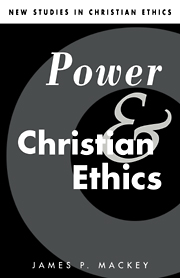Book contents
5 - The anatomy of church
Published online by Cambridge University Press: 05 November 2011
Summary
Communities are not mere agglommerates of discrete individuals. They are, rather, by demands of nature and the needs of survival, structured entities. The most basic structures are provided by role-playing, and the most basic roles, of father and mother for instance, are biologically determined. Other roles may be determined by such elemental features as size and strength, but, as the human species in particular gains a mastery in understanding and imagination over the physical and biological factors that would otherwise determine the whole of its existence, it gains also a certain creative freedom with respect to the structuring of the communities on which its survival depends. It can then begin to institutionalise certain leadership roles: that is to say, offices in the community are named, job descriptions are attached, rights and duties are defined, and means of selection and succession agreed (or imposed, as the case may be).
It is not at all easy to pin-point the year, or even the decade, in which the Christian community became a religious community, and a religion, sufficiently distinguished from its Jewish home and matrix to be capable of notice and description as such, as Christianity rather than (a version of) Judaism. In his recent Cunningham Lectures at the University of Edinburgh, Etienne Trocmé argued that a perceptible cutting of the umbilical cord must be located in the second half of the second century of the so-called Christian era, and possibly later rather than earlier in that period.
- Type
- Chapter
- Information
- Power and Christian Ethics , pp. 181 - 205Publisher: Cambridge University PressPrint publication year: 1994

